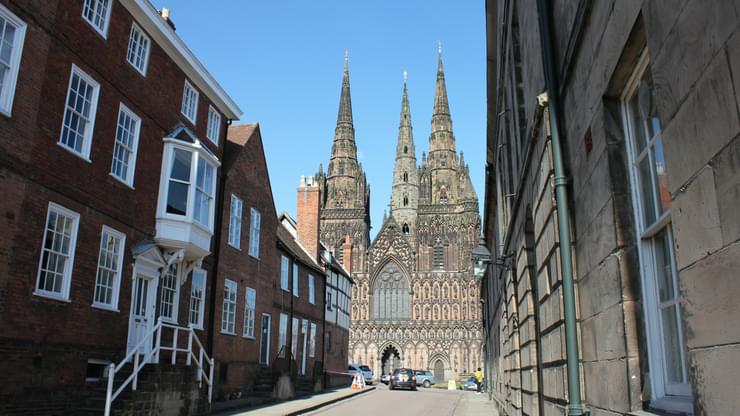Two Saints Way

About this trail
Information
The Two Saints Way is a new 92 mile pilgrimage route which has been recreated between the cathedral cities of Chester and Lichfield. Find out more on the Two Saints Way website.
About the two saints
In medieval times, particular places became a magnet for pilgrims because they either contained some important relics or because they were the burial place or shrine of a saint.
Chester and Lichfield were the resting places of St Werburgh and St Chad respectively.
Both cities were therefore important in their own right as pilgrimage destinations and they were also stopping places for those going on pilgrimages to such places as Holywell or Bardsey Island in Wales or those travelling to Canterbury or even as far as Rome and Jerusalem.
These two saints were key figures who lived at about the same time in the seventh century and by their labours they brought about a complete change in the religious and cultural landscape of Mercia.
Mercia was a powerful kingdom between the seventh and tenth centuries, occupying a somewhat larger area than the Midlands today and including at its greatest extent all of England south of the Dee and the Humber and north of the Avon and the Thames.
Up to the last quarter of the seventh century, Mercia was still largely pagan but Christianity was reaching into Mercia from two different directions and had somewhat differing emphases. What some have termed Celtic Christianity had spread from Ireland via Iona to Lindisfarne in Northumbria through such personalities as St Columba and St Aidan.
The kind of Christianity that was based in Canterbury in Kent was more deeply influenced by Rome. The two saints were influenced by both these strands but there was certainly no evidence of a competitive or divisive spirit in either of them.

Plan your visit
Plan your visit, order a brochure and maps, book a venue and more.



